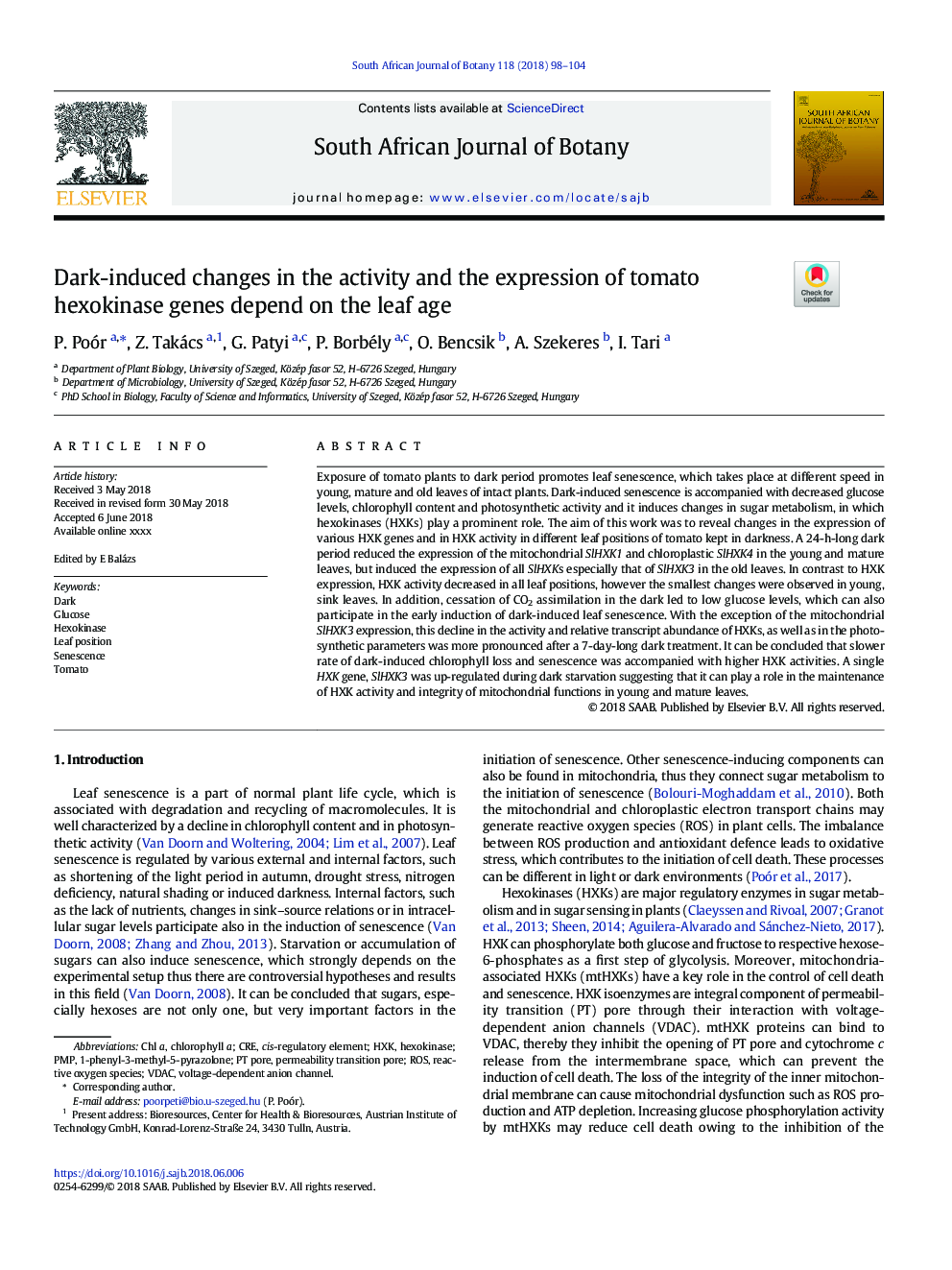| Article ID | Journal | Published Year | Pages | File Type |
|---|---|---|---|---|
| 8882213 | South African Journal of Botany | 2018 | 7 Pages |
Abstract
Exposure of tomato plants to dark period promotes leaf senescence, which takes place at different speed in young, mature and old leaves of intact plants. Dark-induced senescence is accompanied with decreased glucose levels, chlorophyll content and photosynthetic activity and it induces changes in sugar metabolism, in which hexokinases (HXKs) play a prominent role. The aim of this work was to reveal changes in the expression of various HXK genes and in HXK activity in different leaf positions of tomato kept in darkness. A 24-h-long dark period reduced the expression of the mitochondrial SlHXK1 and chloroplastic SlHXK4 in the young and mature leaves, but induced the expression of all SlHXKs especially that of SlHXK3 in the old leaves. In contrast to HXK expression, HXK activity decreased in all leaf positions, however the smallest changes were observed in young, sink leaves. In addition, cessation of CO2 assimilation in the dark led to low glucose levels, which can also participate in the early induction of dark-induced leaf senescence. With the exception of the mitochondrial SlHXK3 expression, this decline in the activity and relative transcript abundance of HXKs, as well as in the photosynthetic parameters was more pronounced after a 7-day-long dark treatment. It can be concluded that slower rate of dark-induced chlorophyll loss and senescence was accompanied with higher HXK activities. A single HXK gene, SlHXK3 was up-regulated during dark starvation suggesting that it can play a role in the maintenance of HXK activity and integrity of mitochondrial functions in young and mature leaves.
Keywords
Related Topics
Life Sciences
Agricultural and Biological Sciences
Agronomy and Crop Science
Authors
P. Poór, Z. Takács, G. Patyi, P. Borbély, O. Bencsik, A. Szekeres, I. Tari,
